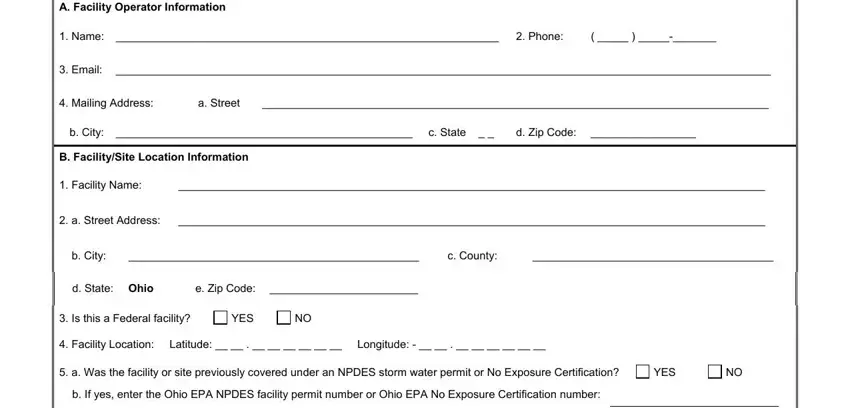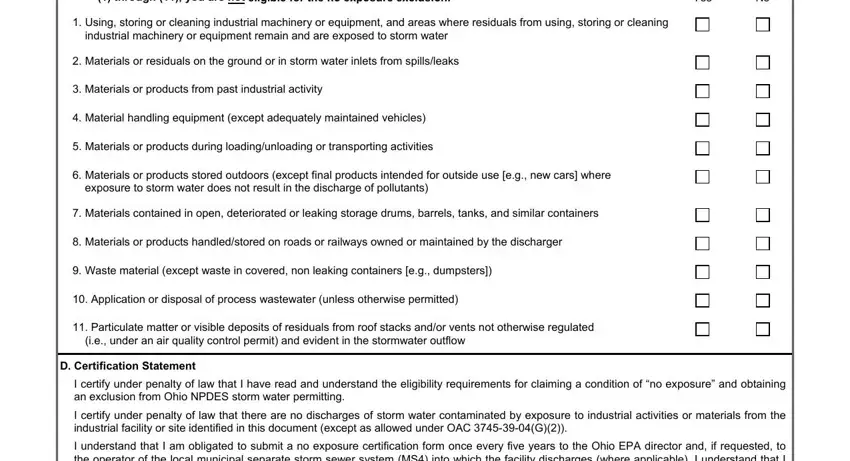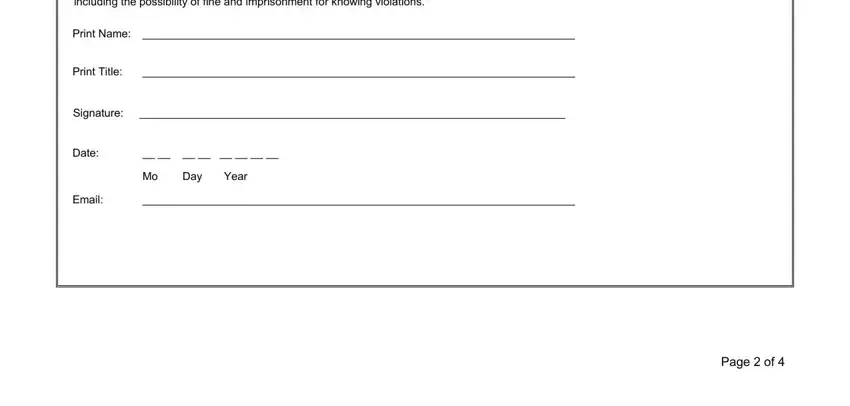Handling PDF files online is definitely a piece of cake with our PDF editor. You can fill in Form Epa 4239 here effortlessly. Our professional team is always endeavoring to enhance the tool and help it become even faster for clients with its cutting-edge features. Bring your experience to a higher level with constantly improving and fantastic opportunities available today! With a few easy steps, you'll be able to start your PDF editing:
Step 1: Access the PDF file in our editor by pressing the "Get Form Button" above on this page.
Step 2: Once you access the file editor, there'll be the document prepared to be filled out. Other than filling in various blanks, you may also perform other sorts of actions with the Document, namely adding custom textual content, modifying the original text, inserting illustrations or photos, affixing your signature to the PDF, and more.
If you want to finalize this PDF document, ensure you type in the right information in each and every blank field:
1. It's very important to fill out the Form Epa 4239 properly, therefore pay close attention while filling in the areas that contain all of these blanks:

2. Given that the last array of fields is finished, you'll want to insert the essential details in SICActivity Codes, Primary, Secondary if applicable, Total size of site associated, acres, a Have you paved or roofed over a, YES, b If yes please indicate, Less than one acre, One to five acres, More than five acres, EPA, and Page of so you can move on to the next part.

A lot of people often make some errors while completing EPA in this area. Ensure that you revise what you enter here.
3. The following segment is focused on Please check either Yes or No in, Yes, Using storing or cleaning, industrial machinery or equipment, Materials or residuals on the, Materials or products from past, Material handling equipment, Materials or products during, Materials or products stored, exposure to storm water does not, Materials contained in open, Materials or products, Waste material except waste in, Application or disposal of, and Particulate matter or visible - complete all of these empty form fields.

4. This next section requires some additional information. Ensure you complete all the necessary fields - Additionally I certify under, Print Name, Print Title, Signature, Date, Mo Day Year, Email, and Page of - to proceed further in your process!

Step 3: Prior to finishing this file, make certain that all form fields were filled out the correct way. The moment you believe it's all good, press “Done." Get the Form Epa 4239 after you sign up for a free trial. Conveniently access the pdf within your personal account page, with any edits and adjustments being conveniently synced! FormsPal guarantees secure form editor devoid of personal data recording or sharing. Feel at ease knowing that your details are secure here!





